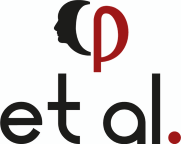Repository | Buch | Kapitel
The pattern that literature makes
Davidson, pragmatism, and the reconstruction of the literary
pp. 41-52
Abstrakt
Recent literary theorists influenced by Continental philosophy have maintained that defining literature in terms of formal structures and qualities of language will not work. But they have not provided the alternative definitions of literature in terms of its uses within the culture, its institutional functions, that their positions would seem to entail. Instead, they have largely abandoned definitional questions altogether, and the result has been that those engaged in literary studies still lack an adequate justification for their enterprise that they can offer to skeptical students and administrators. Although it may seem at first glance an unlikely source, analytic philosophy, the other dominant mode in contemporary philosophy, may provide a solution to this problem. As its name suggests, analytic philosophy specializes in analyzing the structure of a phenomenon — breaking it down into its constituent parts — rather than in assessing its utility — placing it within a wider network of social relations. One way to read the later Wittgenstein is to see him as blurring this distinction by suggesting that the only way to understand the structures of language is to examine the social practices in which they are embedded. Donald Davidson is an analytic philosopher who extends this tradition in the philosophy of language. His views on meaning and interpretation are based on the practical exigencies of actual speech situations rather than on anything like their acontextual "logical form'.
Publication details
Published in:
Rudrum David (2006) Literature and philosophy: a guide to contemporary debates. Dordrecht, Springer.
Seiten: 41-52
Referenz:
Vescio Bryan (2006) „The pattern that literature makes: Davidson, pragmatism, and the reconstruction of the literary“, In: D. Rudrum (ed.), Literature and philosophy, Dordrecht, Springer, 41–52.







